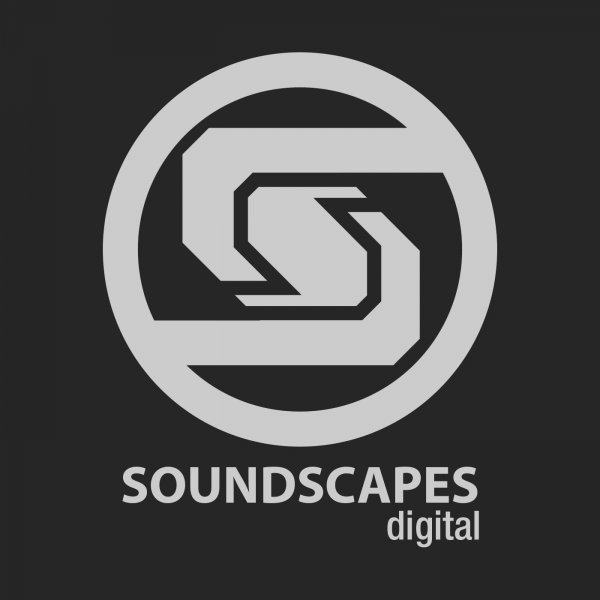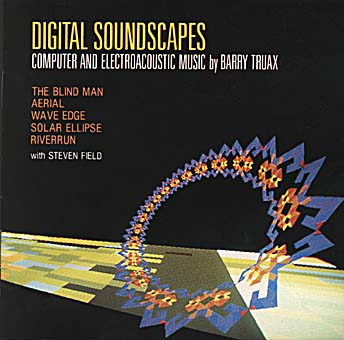Introduction
Ambient music, a genre celebrated for its ethereal and immersive qualities, has always had a deep connection with technology. From the early experiments with analog synthesizers to the contemporary digital soundscapes, technological innovations have been instrumental in shaping the sonic landscapes of ambient music. In this article, we will journey through the evolution of ambient music, exploring the significant role of technology and how it has transformed the genre.
Ambient music, with its ethereal and immersive qualities, is a genre intrinsically linked to the ever-evolving realm of technology. Since its inception, technology has been an indispensable tool in shaping the unique sonic landscapes that define ambient music. Let’s embark on a journey through the evolution of this genre, delving into the pivotal role of technology and how it has continually transformed and expanded the horizons of ambient music.
Analog Beginnings: Ambient music finds its roots in the mid-20th century, with artists like Brian Eno and Robert Fripp experimenting with analog synthesizers, tape loops, and early electronic instruments. These analog tools allowed for the creation of rich, textural soundscapes that pushed the boundaries of traditional musical composition.
Synthesizers and Sound Pioneers: The advent of synthesizers, notably the Moog synthesizer, played a crucial role in the early development of ambient music. Synthesizers allowed artists to generate a vast array of sounds, from warm, oscillating waves to hauntingly atmospheric tones. Pioneers like Tangerine Dream and Klaus Schulze used these synthesizers to craft expansive and immersive sonic experiences.
Digital Revolution: The introduction of digital technology in the late 20th century marked a significant turning point for ambient music. Digital synthesizers and samplers enabled artists to manipulate and sculpt sound with unprecedented precision. This digital revolution expanded the sonic palette of ambient music, introducing pristine textures and intricate layers.
Computer-Based Composition: The advent of personal computers and digital audio workstations (DAWs) democratized music production, making it more accessible to a broader range of artists. Ambient musicians could now compose and manipulate their sonic creations with ease, experimenting with complex arrangements and intricate sound design.
Virtual Instruments and Sampling: Virtual instruments and sample libraries have become indispensable tools for ambient composers. These virtual instruments emulate a wide range of acoustic and electronic sounds, enabling artists to incorporate elements from diverse musical traditions and cultures into their ambient compositions.
Spatial Audio and Immersion: Advancements in spatial audio technology have enhanced the immersive qualities of ambient music. Techniques like binaural recording and 3D audio spatialization create a sense of presence and depth, allowing listeners to feel as if they are enveloped in the music itself.
Live Performance and Interactive Technology: Ambient artists have embraced interactive technology in their live performances. MIDI controllers, touch-sensitive interfaces, and real-time processing allow for dynamic and improvisational performances that respond to both the artist’s input and the audience’s presence.
Global Collaboration and Online Distribution: The internet has connected ambient artists from around the world, fostering collaboration and the exchange of ideas. Online distribution platforms have made it easier for ambient musicians to share their work with a global audience, democratizing the genre further.
Environmental and Field Recording: Ambient music often incorporates field recordings and environmental sounds. Advancements in portable recording equipment have enabled artists to capture the sounds of nature, urban environments, and everyday life, integrating them seamlessly into their compositions.
In conclusion, the evolution of ambient music is a testament to the symbiotic relationship between artistic creativity and technological innovation. As technology continues to advance, the boundaries of what is possible in ambient music expand, inviting new generations of artists to explore and shape the genre’s limitless sonic horizons. Ambient music remains a captivating realm where technology serves as a gateway to the exploration of introspection, atmosphere, and sonic wonder.
For additional details, consider exploring the related content available here Ambient Music Guide: 5 Characteristics of Ambient Music – 2023 …
The roots of ambient music can be traced back to the late 1960s and early 1970s when artists like Brian Eno began to experiment with electronic music and minimalistic compositions. This era marked the dawn of analog synthesizers as key instruments in ambient music production.
Analog synthesizers, with their rich, warm tones and the ability to create otherworldly sounds, became the canvas upon which ambient musicians painted their sonic landscapes. Artists like Eno used synthesizers to craft lush, evolving soundscapes that were both meditative and emotionally resonant. The unpredictability and hands-on nature of analog synthesis contributed to the genre’s organic and exploratory character.
For additional details, consider exploring the related content available here Master of Music in Music Production, Technology, and Innovation …

The advent of sampling technology in the 1980s brought a new dimension to ambient music. Artists could now incorporate real-world sounds, such as field recordings, into their compositions. This added layer of realism allowed for a more profound connection between the music and the listener, as the sounds of nature, cityscapes, or voices could be seamlessly woven into the sonic tapestry.
Sampling technology also enabled artists to manipulate and transform audio recordings in unprecedented ways. The ability to time-stretch, pitch-shift, and layer samples opened up endless creative possibilities. Artists like The Orb and Future Sound of London embraced these tools, creating ambient tracks that embraced a collage-like aesthetic, blending disparate elements into cohesive soundscapes.
To delve further into this matter, we encourage you to check out the additional resources provided here: Nks Partners

The late 20th century witnessed the digital revolution, which had a profound impact on music production and distribution. Digital synthesizers, virtual instruments, and software-based recording and editing tools became increasingly prevalent in the creation of ambient music. The convenience and flexibility of digital technology allowed artists to explore new sonic territories and push the boundaries of the genre.
The rise of the internet and digital distribution also democratized the production and dissemination of ambient music. Independent artists could now share their work with a global audience, leading to a proliferation of subgenres and a rich diversity of styles within the ambient music sphere.
Should you desire more in-depth information, it’s available for your perusal on this page: From Analog to Digital: The Evolution of Music through Technology

As we enter the 21st century, technological innovations in ambient music continue to evolve. Advancements in virtual reality and spatial audio technology are transforming the way we experience soundscapes, offering new opportunities for immersive and three-dimensional ambient compositions.
Machine learning and artificial intelligence are also making their mark on the genre. AI-generated ambient music is becoming increasingly sophisticated, with algorithms capable of creating intricate and emotionally resonant compositions, expanding the boundaries of what ambient music can be.
The 21st century has ushered in a thrilling era of technological innovation in ambient music, pushing the boundaries of sonic exploration to new frontiers. In this age of rapid advancement, we find ourselves at the cusp of a sonic renaissance, where technology is opening up exciting avenues for immersive and emotionally resonant soundscapes.
Spatial Audio and Virtual Reality: Perhaps one of the most captivating developments in ambient music is the integration of virtual reality and spatial audio technology. This fusion transforms the way we perceive soundscapes, offering a three-dimensional canvas for artists to craft their sonic narratives. Through VR headsets and spatial audio systems, listeners are transported into multi-dimensional sonic realms where they can immerse themselves fully in the ambient compositions. It’s a sensory journey that blurs the lines between the real and the imagined, redefining the concept of sonic immersion.
The Rise of AI-Generated Ambient Music: Machine learning and artificial intelligence have become invaluable tools in the ambient musician’s arsenal. AI algorithms, now more sophisticated than ever, are capable of not only replicating but also innovating upon the genre’s core principles. They can analyze vast databases of ambient music, identifying patterns and nuances that human composers might overlook. The result? AI-generated ambient music that is intricate, emotionally resonant, and deeply evocative. These compositions push the boundaries of what ambient music can be, challenging our preconceptions and expanding our sonic horizons.
Collaborative Creativity: Another exciting aspect of technology’s role in ambient music is its potential to foster collaborative creativity. Musicians and AI algorithms are joining forces, co-creating compositions that marry the human touch with machine precision. This synergy between artist and machine can lead to groundbreaking works that harness the best of both worlds, offering audiences an unprecedented listening experience.
Accessibility and Personalization: Technology has also made ambient music more accessible and customizable than ever before. With streaming platforms and AI-driven recommendation systems, listeners can curate their own ambient soundscapes tailored to their preferences and moods. This democratization of ambient music allows a broader audience to explore and appreciate the genre’s beauty and therapeutic qualities.
Sonic Exploration Without Bounds: As we navigate this era of technological innovation, the possibilities for ambient music seem boundless. From AI-generated compositions that tap into the depths of human emotion to immersive spatial audio experiences that transport us to otherworldly realms, ambient music is evolving and expanding. It continues to be a canvas for sonic exploration, inviting us to embark on a journey of both introspection and transcendence.
In conclusion, the 21st century is an exhilarating chapter in the story of ambient music, where technology is not just a tool but a collaborator in the creative process. With virtual reality, AI-generated compositions, and personalized listening experiences, ambient music is undergoing a renaissance that promises to redefine the genre for a new generation of listeners. It’s a journey into the limitless possibilities of sound, where the boundaries of imagination are the only constraints.
Don’t stop here; you can continue your exploration by following this link for more details: Voltage Connect 2017 Presenters | Berklee College of Music

Conclusion
The history of ambient music is inseparable from the evolution of technology. From the analog synthesizers that birthed the genre to the digital innovations of the present day, technology has been the catalyst for sonic exploration and artistic innovation. As technology continues to advance, the possibilities for ambient music are boundless, promising a future filled with even more immersive and emotionally resonant sonic landscapes. Ambient music, with its deep connection to technology, reminds us that the marriage of art and innovation can create timeless and transformative auditory experiences.
The intricate relationship between ambient music and technological advancement is a testament to the genre’s evolution and the limitless possibilities it holds for the future. Let’s further explore how technology has been an integral part of ambient music’s journey and how it continues to shape the genre:
Analog Pioneers: Ambient music’s origins in the 1970s were closely intertwined with the emergence of analog synthesizers and electronic instruments. Artists like Brian Eno, one of the genre’s pioneers, utilized these novel tools to craft ethereal soundscapes, setting the stage for ambient’s distinct sonic identity.
Digital Revolution: The advent of digital technology in the late 20th century revolutionized music production and distribution. Digital synthesizers, recording software, and sampling techniques expanded the palette of ambient composers, enabling them to create intricate and layered compositions.
Infinite Sound Possibilities: Digital technology introduced the concept of virtually limitless sound possibilities. Ambient artists could now experiment with an extensive array of virtual instruments, effects, and processing techniques, giving rise to a diverse range of ambient subgenres and styles.
Accessible Production: The democratization of music production through affordable software and hardware has empowered a new generation of ambient musicians. Anyone with a computer and a creative vision can delve into ambient music production, fostering a vibrant and inclusive community of artists.
Virtual Soundscaping: Virtual reality (VR) and augmented reality (AR) technologies have opened up innovative avenues for ambient music. VR environments can provide immersive, 360-degree sonic landscapes that envelop the listener, creating profoundly transformative auditory experiences.
Interactive Installations: Ambient music intersects with interactive installations, where technology allows listeners to actively engage with the music and shape their sonic journey. These installations can be found in art galleries, museums, and public spaces, bridging the gap between art, technology, and sound.
AI and Machine Learning: Emerging technologies in artificial intelligence (AI) and machine learning are poised to play a significant role in the future of ambient music. AI-driven composition and generative music systems can create ambient soundscapes that evolve and adapt in real-time, offering unique and personalized listening experiences.
Spatial Audio: Advancements in spatial audio technology enable ambient composers to explore three-dimensional soundscapes. This immersive audio experience, often heard through technologies like Dolby Atmos and ambisonics, adds a new dimension to the genre.
Global Collaboration: Technology has facilitated collaboration among ambient musicians across the globe. Artists can collaborate remotely, merging their sonic perspectives and cultural influences, resulting in a fusion of styles that transcend geographical boundaries.
Sustainability and Soundscaping: Ambient music intersects with environmental concerns through eco-friendly soundscaping. Musicians can use technology to record and raise awareness about endangered ecosystems and natural environments, contributing to conservation efforts.
In essence, the marriage of technology and ambient music exemplifies the transformative power of innovation in the world of art. As technology continues to advance, the genre’s capacity for creating emotionally resonant, immersive, and spiritually uplifting soundscapes grows exponentially. The future of ambient music promises to be a captivating blend of tradition and innovation, where sonic exploration knows no bounds and the artistic possibilities are as limitless as the digital realm itself. It serves as a reminder that the fusion of art and technology can create timeless and profound auditory experiences that transcend the boundaries of our imagination.
You can also read more about this here: Master of Music in Music Production, Technology, and Innovation …
More links
For additional details, consider exploring the related content available here Master of Music in Music Production, Technology, and Innovation …
